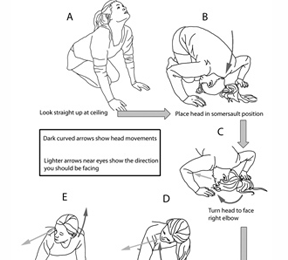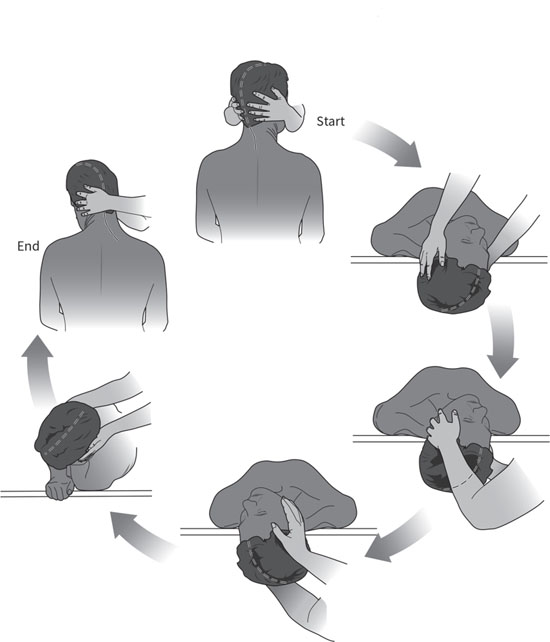Having vertigo is not fun. Vertigo, a sensation of movement—usually spinning—when you’re not actually moving, can cause dizziness, nausea, sickness, and loss of balance.
- Dr Carol Foster Vertigo Exercises
- Vertigo Exercises Dr Carol Foster
- Vertigo Exercises Carol Foster Video
- Carol Foster Vertigo Instructions
- Carol Foster Vertigo Treatment Video
11/8/2013 The first exercises are called Brandt-Daroff exercises. Start in an upright, seated position. Start in an upright, seated position. Then move into a lying position on one side with your nose pointed up at about a 45-degree angle. There are actually 4 types of maneuvers to treat positional vertigo: Epley, Semont, Half-Somersault or Foster, and the Brandt-Daroff maneuver. Carol Foster from the University of Colorado Hospital pioneered a vertigo treatment that worked for her and her patients and it is appropriately named the Foster maneuver. Benign paroxysmal positional vertigo, or BPPV, is dizziness due to an unbalance or crystal movement in the inner ear. It can happen when you are sitting, walking or laying down and sometimes the dizziness is so bad that it makes one nauseous. The author, Carol Foster explains simple exercises that can be done at home to alleviate these attacks.
These symptoms can last for moments or be ongoing for months. It’s also the number 1 cause of broken bones and head injuries of people over 55. Doctors don’t really have a solution either, but recently there has been a breakthrough helping people get relief.
This weird “snoring” trick has helped thousands of people get a hold of vertigo for good.
There are many different causes and categories of vertigo, says Carol Foster, M.D., an associate professor in the Department of Otolaryngology at the University of Colorado.
It can be caused by inner ear viruses, Ménière’s disease, or conditions that require surgery. Try these exercises before going through with an expensive surgery.
But for the most common type of vertigo, benign paroxysmal positional vertigo (BPPV), certain exercises can cause it, whereas other movements (like the one mentioned above) can actually help treat it.
“BPPV is just a mechanical problem in the inner ear,” Dr. Foster explains. “The symptoms are very clear: short bursts of vertigo brought on by making a movement.”
BPPV occurs when calcium crystals from your inner ear break free and fall into a semicircular canal. The crystals are used to sense gravity. So when they get into the wrong part of your ear, your brain thinks you’re moving even if you’re not.
How does working out affect vertigo?
While there are undeniable benefits of staying fit, certain workouts can cause positional vertigo. While BPPV is most common among adults above age 60, anyone can experience it—especially if you regularly do activities that involve serious head movement. Because the inner ear crystals are not attached to anything, Dr. Foster says, shaking your head—much like a snow globe—can cause the crystals to move around.
“Positional vertigo is caused by putting your head relatively upside down or moving your head vigorously in the vertical plane,” Dr. Foster further explains. “So people like drill sergeants, who do tons of sit-ups and slam their head on the ground and then sit up again, get positional vertigo more than other people who don’t do that. People who do yoga and Pilates get it more than other people because they put their heads somewhat upside down, too.”
Dr. Foster says that swimming can also set off BPPV, as the constant turning of your head in the water can cause the crystals to move.
Did you know that meditation helps vertigo? Click here to see a sample meditation class as well as our other workouts.
What exercises can I do to treat it?
The good thing about positional vertigo is that it’s treatable with exercise. BPPV is commonly treated with the Epley maneuver. This a series of movements involving head rotations to get the ear crystals back to where they should be. It’s safe and effective and treats positional vertigo without medication.
Dr. Foster developed another exercise to help treat BPPV called the Half Somersault Maneuver that can be done at home without a medical professional. Like the Epley, the Half Somersault is a series of movements that involves tucking and rotating your head to get the crystals out of the canal. Though effective, Dr. Foster says if the maneuver doesn’t work, you should see your doctor for treatment. She also cautions that while doing any vertigo exercise, you may feel dizzy until it’s over.
“In order to get the crystals out from where they’re stuck, you have to feel vertigo as they go all the way around and out,” she says. “You feel spinning during it. But then that will be the last spinning you feel once you get them all out.”
Check out the meditation experience in the Aaptiv app here.
What should I do if I experience vertigo during a workout?
If you have positional vertigo and experience an attack in the middle of the workout, Dr. Foster says the best thing is to do a maneuver immediately. “If you’re at yoga class and you suddenly spin, you just do a maneuver and get up and proceed,” she says. “But don’t put your head back down again.”
If you’re really not feeling well, you should take a break from your workout. Never push your body if you’re ill or at risk of injury. Also, if you’re unsure about what you’re experiencing or you haven’t dealt with positional vertigo before, it’s best to listen to your body and consult a medical professional.
What should I consider when working out after treating vertigo?
BPPV is a mechanical problem, Dr. Foster says, so you should avoid making any vertical head movements for a few weeks after you treat it. This includes looking up, bending over forward, or rolling from side to side. You don’t need to cease working out entirely, but stay clear of downward dog, headstands, or any other upside-down movements. Avoid swimming as well until you’re better.

You should also take a break from putting your head lower than horizontal. “You can continue doing any other part of an exercise, but you want to keep your head relatively upright right after you’ve had a [vertigo] attack,” Dr. Foster says. “Otherwise, the crystals could easily fall back in.”
No matter what type of vertigo you experience, always consult with a medical professional before trying any treatment method or workout. He or she will best be able to identify the appropriate course of action for your personal situation.
A New You In 30 Days. Introducing Aaptiv “Coach” – Click the image below to learn more.
See a Problem?
Preview — Overcoming Positional Vertigo by Carol A. Foster
Be the first to ask a question about Overcoming Positional Vertigo
Overcoming Positional Vertigo addresses a specific type of vertigo known as BPPV(Benign Paroxysmal Positional Vertigo).
BPPV causes short dizzy spells (approx 2 min) usually at bedtime caused from crystals in inner ear that are out of place.
The Epley Maneuver and Semont Maneuver were addressed as possible solutions that are free of charge and easy to manipulate.
For those like myself who have vertigo I have used...more
This book was very well written and thoroughly explained all the varying nuances of dizziness and other related issues. Unfortunately, much of the book was written more for physicians and other health care workers but only helpful if they actually read the book. It might behoove the author to write a similar book geared more for patients and...more
I would like to thank the author, publisher, and NetGalley for the opportunity to read this book, in exchange for an honest review.
Dr Carol Foster Vertigo Exercises

I thought this was an informative and helpful book regarding vertigo. One of the things I appreciated was that the author herself suffered from vertigo and could really understand what it's like go through that, as a lot of people (fortunately) never know that feeling.
Vertigo Exercises Dr Carol Foster
Apr 26, 2019
If you've ever suffered a bout of vertigo, you know it can be debilitating. I was keen to read this book because I have had vertigo more than once and wanted to learn more about it and how to deal with it. The book details the causes of vertigo, various exercises and maneuvers to alleviate your symptoms, and provides tips to help prevent future recurrences. It is filled with loa...more
Vertigo Exercises Carol Foster Video
Nov 16, 2018
Nov 16, 2018
Nov 16, 2018